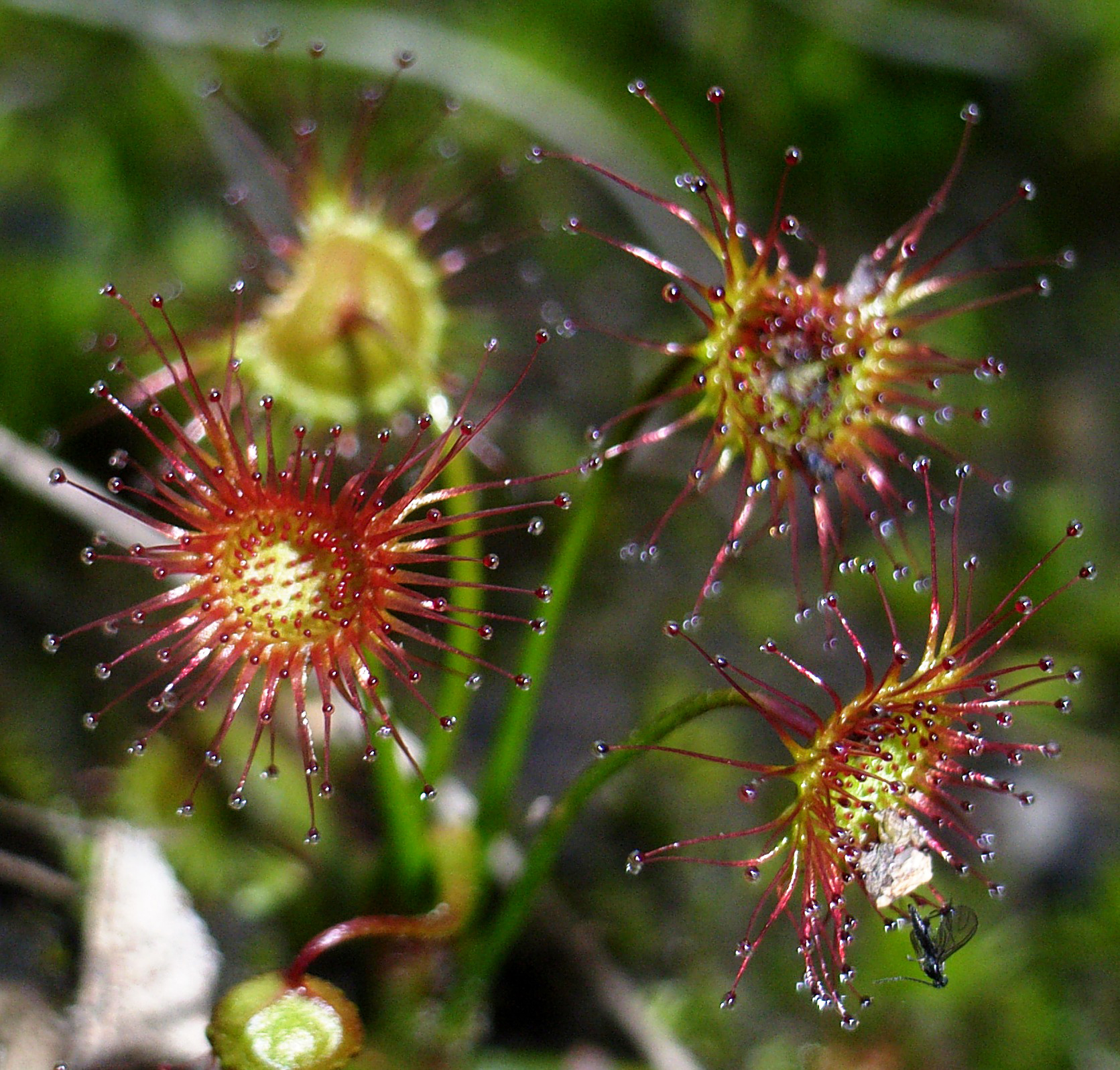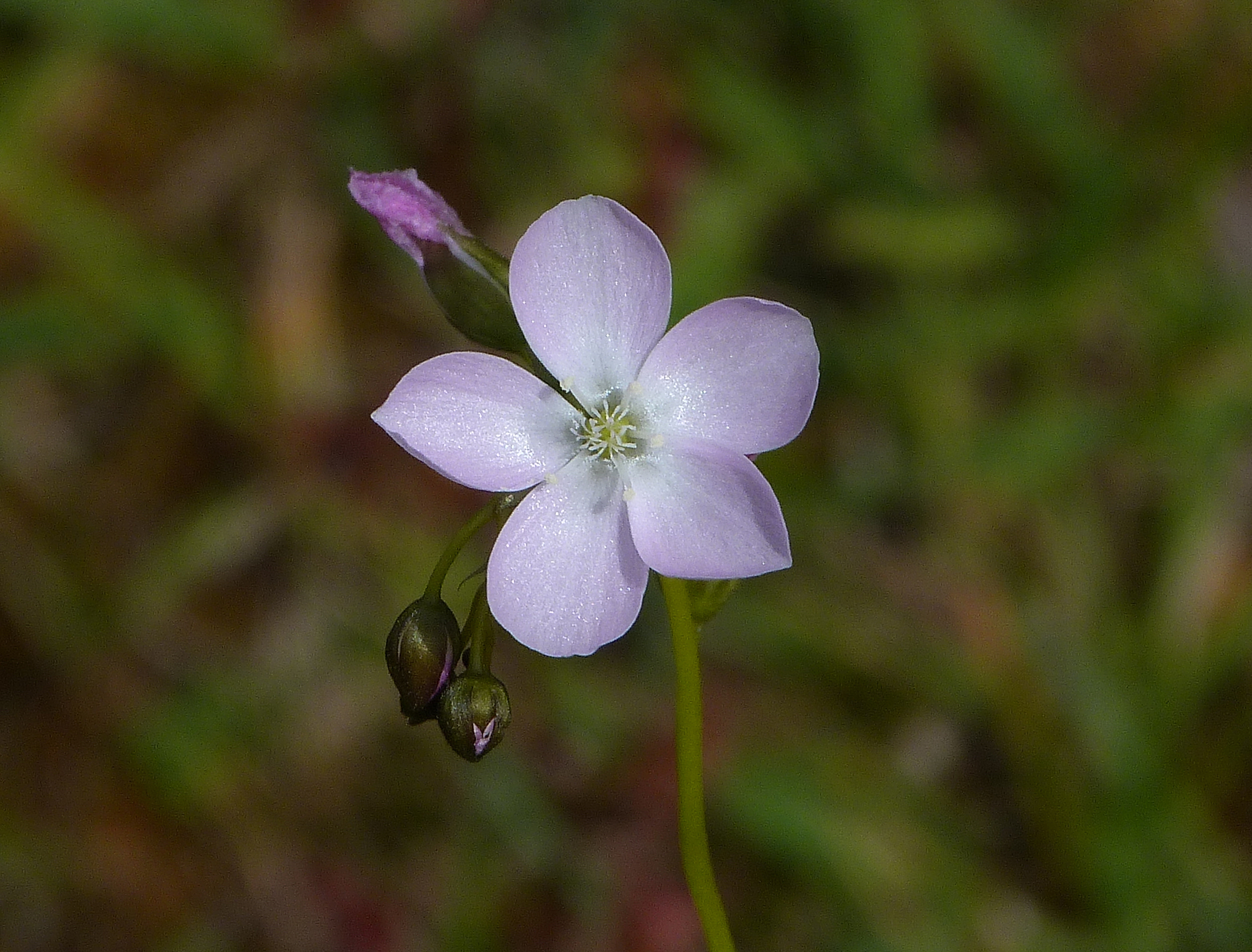


Sundew
Drosera auriculata
Carnivorous or insectivorous climbing or scrambling tuberous sundew. Hairy leaves at base of stem, though sometimes much reduced or absent. Shield-shaped leaves to 15 mm long, often tinged with variable amounts of red (or even solid red), on 5 mm stalks on stem to 50 cm high, simple or branched. White or light pink flowers in clusters of 2-8.
| Details | |
|---|---|
| Flora Type | Herbs |
| Distinctive Features | Insectivorous plant with basal rosette of leaves that in sun glisten like dew, and flowers on long stalk to 50 cm. |
| Biology | Perennial. Widespread in moist situations. Tolerates disturbance, and often survives in grazed sites. This genus is is either a single extremely variable species, or a complex of several closely related species. Can survive drought as a dormant underground tuber. |
| Native Status | Native |
| Flowering Time | Aug-Jan |
| Taxonomy | |
|---|---|
| Phylum | Tracheophyta (Vascular Plants) |
| Class | Magnoliopsida (Flowering Plants) |
| Order | Caryophyllales |
| Family | Droseraceae |
| Genus | Drosera |
| Species | auriculata |
Traps small insects using the sticky hairs around the margins of the leaves. These hairs contain a gland that releases digestive enzymes.
| Interesting Facts | |
|---|---|
| Similar Species | This genus is is either a single extremely variable species, or a complex of several closely related species. Drosera peltata is similar but is distinguished by having more distinct basal leaves. |
| Native Status | Native |